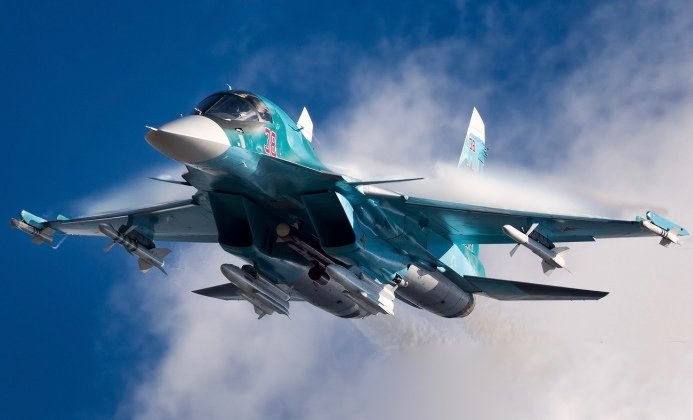<p >The Russian Air Force was confirmed on November 25 to have received a new batch of Su-34 strike fighters, following considerable efforts by industry to expand production of the aircraft. CEO of the state run United Aircraft Corporation Vadim Badekha announced the delivery as follows: "The timely fulfilment of the state defence contract is a key task of the UAC. Our workforces are doing this important job with honour. This is not the last batch of Su-34 fighter-bombers this year. These aircraft are the basic strike power of our frontline aviation and demonstrate their efficiency in real combat conditions.” He added that the aircraft had already been sent to the places of their operation after completing necessary testing. The delivery follows prior batches delivered in <a href=" >April</a>,&nbsp;<a href=" >June</a>&nbsp;and&nbsp;<a href=" >September</a> and <a href=" >October</a>. The Su-34 continues to be relied on not only for combat operations against Ukrainian and <a href=" target="_blank">allied Western forces </a>in Kursk, Ukraine, and the disputed Donbas regions, but also to safeguard Russian security more broadly amid heightened tensions with the Western Bloc.</p><p ><img src=" title="Su-34 Strike Fighter"></p><p >In October 2023 the Russian Defence Ministry gave directives to expand production of the Su-34, which is manufactured at the Chkalov Aircraft Factory&nbsp;in Novosibirsk, Siberia, using parts with supply chains across much of the country. The aircraft have been acquired in much greater numbers than any other fighter class since the disintegration of the Soviet Union, and have continued to be modernised with a range of new upgrades and subsystems.&nbsp;The first order for the enhanced Su-34M variant was <a href=" target="_blank">placed in 2020</a>, with the director general of the United Aircraft Corporation Yuri Slyusar having previously claimed that the new version had double the combat capacity of the original Su-34. </p><p >Much remains uncertain regarding the Su-34Ms enhancements, although almost all of its avionics were reportedly significantly improved, including electronic warfare systems, while the aircraft gained access to a wider range of guided weapons. Specialised variants of the Su-34M built for reconnaissance or electronic warfare have also been delivered, with the former integrating the UKR-RT electronic search pod, the UKR-OE camera pod and the UKR-RL which integrates a synthetic aperture radar, while the latter integrates the L700 Tarantul ECM pod as a primary armament among other unknown alterations.</p><p ><img src=" title="Gliding FAB-3000 Launched by Su-34"></p><p >The Su-34 was first combat tested in the Syrian theatre, where they were deployed from late 2015 to support the local government’s counterinsurgency operations. Although less manoeuvrable than other Russian fighters, the aircraft still retains a significant air to air combat capability, with units deployed to Syria having been armed with R-27 radar guided air to air missiles to deter possible Western or Turkish attacks. Su-34s have more recently played a central role in the ongoing Russian-Ukrainian War, with recent footage consistently showing the aircraft launching&nbsp;<a href=" >intensive bombardment&nbsp;</a>of Ukrainian and allied Western forces in Kursk. The aircraft are prized for their particularly high weapons carrying capacities, which allow them to deploy new FAB-3000&nbsp;3000 kilogram glide bombs, as well as multiple combinations of lighter ordinance including <a href=" target="_blank">bombs with thermobaric warheads</a>. </p><p >Although Su-34s have taken over two dozen losses to Ukrainian air defences, their very low production costs estimated at little over $10 million, depending on exchange ranges, makes these losses limited when considering the high reported recovery rates for their pilots. The procurement cost of each is comparable to that of a Western main battle tank, with the primary reason why the aircraft are not fielded in much larger numbers being their high operational costs.&nbsp;The Su-34 can significantly improve its survivability by using long range cruise or ballistic missiles, but can deliver much more ordinance per sortie, and at a much lower cost, if dropping gravity bombs – albeit at the cost of being more vulnerable. The aircraft is expected to remain in production well into the 2030s alongside the <a href=" target="_blank">Su-57 fifth generation fighter</a>, with other Russian fighters being produced today such as the Su-30 and Su-35 expected to be phased out of production.&nbsp;</p>
Russian Air Force Receives New Batch of Su-34 Fighters For Third Consecutive Month: Production Surge Ongoing

